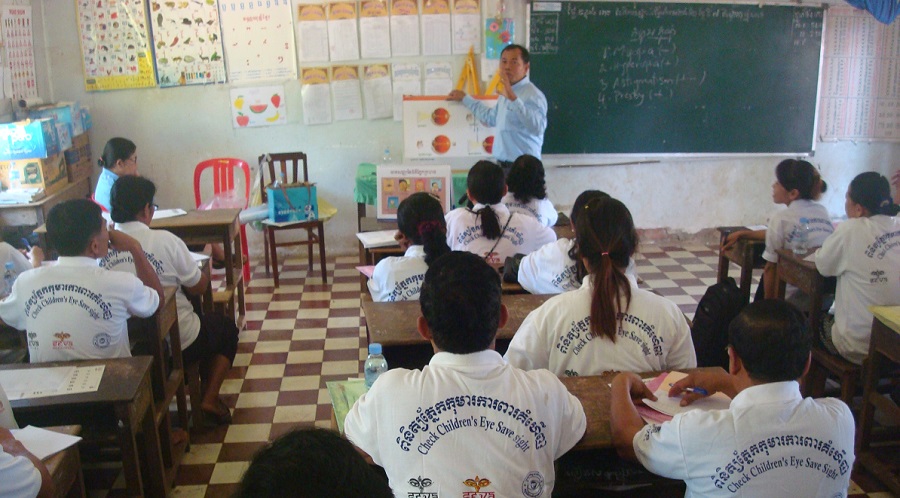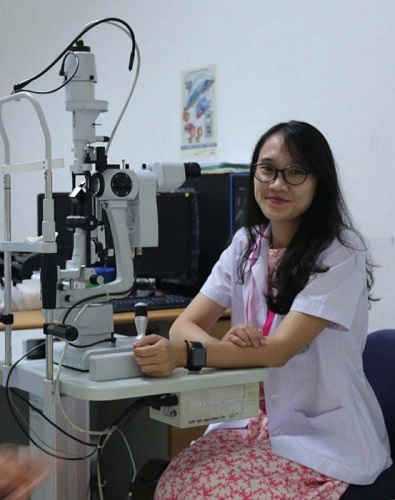Join a powerful, unprecedented alliance for better eye health for all.
Join IAPB-
Choose an alternate language here

Seva Foundation (“Seva”) works with program partners around the world to ensure that their institutions have a sustainable human resource pipeline that prioritizes local skilled workers and ongoing training. In Cambodia, where 38 ophthalmologists are serving the country’s population of 15 million, there is an overwhelming need for well-trained ophthalmologists – as well as other eye health personnel – especially those who will work outside of Phnom Penh[1].
In 1999, Seva established its Sight Program in Cambodia to increase access to eye care services in five provinces: Battambang, Banteay Meanchey, Kampot, Pursat, and Siem Reap. At the provincial level, Seva partners with government eye units to ensure underserved populations, particularly in rural areas, are able to access the eye care they need. Seva and its partners implement various outreach models, such as community field workers and eye camps, to reach these populations and refer them to the nearest eye unit. To ensure there are well-trained eye care personnel to treat these patients when they arrive at the eye unit, Seva Cambodia, in partnership with the Ministry of Health’s National Program for Eye Health, invests in training local eye care personnel, including eye doctors.
To date, Seva Cambodia has supported seven ophthalmology residency trainees. Four of whom have completed their training and work across four provinces in Cambodia. Two of the three doctors currently in training are supported through SiB. One of whom is Dr. Prom Povsorina, an eye doctor originally from the northwestern province of Banteay Mancheay. Prior to entering her ophthalmology residency program in 2017, she worked as an eye doctor at Angkor Hospital for Children (AHC) in Siem Reap. After a few years at AHC, she knew her journey as a doctor was not complete and began searching for a way to further her studies to become an ophthalmologist.

While searching for a residency program, she quickly faced unanticipated barriers to obtaining her next level of education. At the time, there was one university in Cambodia that offered ophthalmology residency training. Dr. Povsorina applied only to learn that the entrance exam was conducted in French. She had studied medicine in English and was ultimately unable to pass the exam. French was formerly a common language in Cambodia; today, however, most students opt to learn English. Since then, the International University has opened in Phnom Penh and offers its entrance exams in languages other than French alone.
Through her membership to the Cambodian Ophthalmological Society, she learned that the Thammasat University School of Medicine Eye Center in Bangkok, Thailand offers ASEAN members a three-year ophthalmology residency and a one-year subspecialty fellowship. She was accepted as a candidate to Thammasat University in 2017 and recently completed her second year of residency training. When she finishes her training, she looks forward to returning to Cambodia and serving people in need outside Phnom Penh.
In addition to building up the cadre of qualified eye care doctors in Cambodia, Seva has also supported the training of more than 4,000 allied ophthalmic personal, health center staff, village health volunteers, and school teachers.
The investment in local individuals not only ensures that communities are provided with on-going access to eye care long after the SiB project is complete, but moves the country towards achieving its target of 10 ophthalmologists per one million population by 2020 as outlined in the country’s National Strategic Plan for Blindness Prevention and Control 20162020[2].
Author name – Vann Ratana
Author email – [email protected]
Author job title – Program Director, Seva Cambodia
Author name – Roshan Bista
Author email – [email protected]
Author job title – Program Coordinator, Seva Cambodia
[1] https://www.iapb.org/iapb-regions/western-pacific/cambodia/
[2] National Strategic Plan for Blindness Prevention and Control 2016-2020. The National Program for Eye Health, Sept. 2017, p.39.